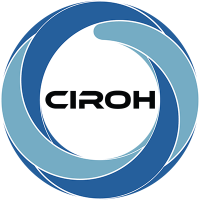Run the NextGen National Water Resources Modeling Framework locally with ease.
NGIAB provides a containerized and user-friendly solution for running the NextGen framework, allowing you to control inputs, configurations, and execution on your local machine.
Why NextGen In A Box?
- Run NextGen Locally: Experiment with the framework and customize configurations on your local machine.
- Control Over Inputs: Choose specific regions or basins for analysis and modify input data as needed.
- Simplified Setup: Utilize Docker containers for effortless deployment, avoiding complex software installations.
- Open Research Practices: Promote transparency and reproducibility through open-source tools like Git and GitHub.
- This branch specifically for the users of Singularity container image to run simulation on NextGen Framework
- The file structure and brife information of each file:
. ├── guide.sh ├── README.md └── singularity ├── singularity_ngen.def └── templates ├── guide └── HelloNGEN.shguilde.sh: The guide script to run the simulations on the singularity imageREADME.md: Documentation of how to run the model and contribute in development on NGIABsingularity_ngen.def: The singularity definition file to build imageHelloNGEN.sh: This is NGen execution script, which runs when the image is being executed by users.
On your HPC system, request an interactive session on a compute node using your scheduler (e.g., SLURM):
srun --partition=<partition_name> --nodes=1 --ntasks=1 --time=<hh:mm:ss> --pty bashReplace <partition_name> and <hh:mm:ss> with the appropriate partition and time limits for your HPC system.
Ensure SingularityCE is installed and validated on your HPC system. All operations, including data preparation and running the simulation, should be performed on a compute node, not the login node. Consult your system administrator or follow these steps:
i. Check Singularity Availability:
Verify that SingularityCE is installed on your HPC environment by running:
singularity --versionii. Install SingularityCE (if necessary):
Refer to the official SingularityCE installation guide for instructions tailored to Linux environments.
- Download Sample Data: Use the provided commands to download sample data for the Sipsey Fork case study.
- To generate your own data: Refer to the NGIAB-datapreprocessor for instructions on generating custom input data.
- To generate your own data and run using NGIAB: Refer to the ngen-datastream repository for instructions on generating custom input data.
This section guides you through downloading and preparing the sample input data for the NextGen In A Box project.
Step 1: Create Project Directory
On the HPC system, create a directory for the project and data using the following commands:
mkdir -p NextGen/ngen-datacd NextGen/ngen-dataStep 2: Download Sample Data
Use wget to download the compressed data file:
Option 1: AWI-007 input data (relization file includes - SLOTH, NoahOWP, CFE)
wget --no-parent https://ciroh-ua-ngen-data.s3.us-east-2.amazonaws.com/AWI-007/AWI_16_2863657_007.tar.gzOption 2: AWI-008 input data (realization file includes - SLOTH, Demostration LSTM)
wget --no-parent https://ciroh-ua-ngen-data.s3.us-east-2.amazonaws.com/AWI-008/AWI_16_2863806_008.tar.gzStep 3: Extract and Rename
Extract the downloaded file and optionally rename the folder:
Option 1:
tar -xf AWI_16_2863657_007.tar.gzOption 2:
tar -xf AWI_16_2863806_008.tar.gzNow you have successfully downloaded and prepared the sample input data in the NextGen/ngen-data directory.
Step 4: Clone and Run Navigate to the NextGen directory, clone the repository, and execute the guide script:
cd ../../NextGengit clone https://github.com/CIROH-UA/NGIAB-HPCInfra.gitcd NGIAB-HPCInfra./guide.shTo run NextGen framework, hydrologist only have to execute the guide script to run simulations on self-contained NextGen framework container image.
- The guide script feature:
- Determine architecher of the underling system (ARM or x86)
- Automaticlly download latest Singularity NextGen image from Docker Hub
- Allow to attach input data by providing relative path of it
- The options of running image:
- Run simulation in Serial mode
- Run simulation in Parallel mode
- Run image in Interactive shell mode

